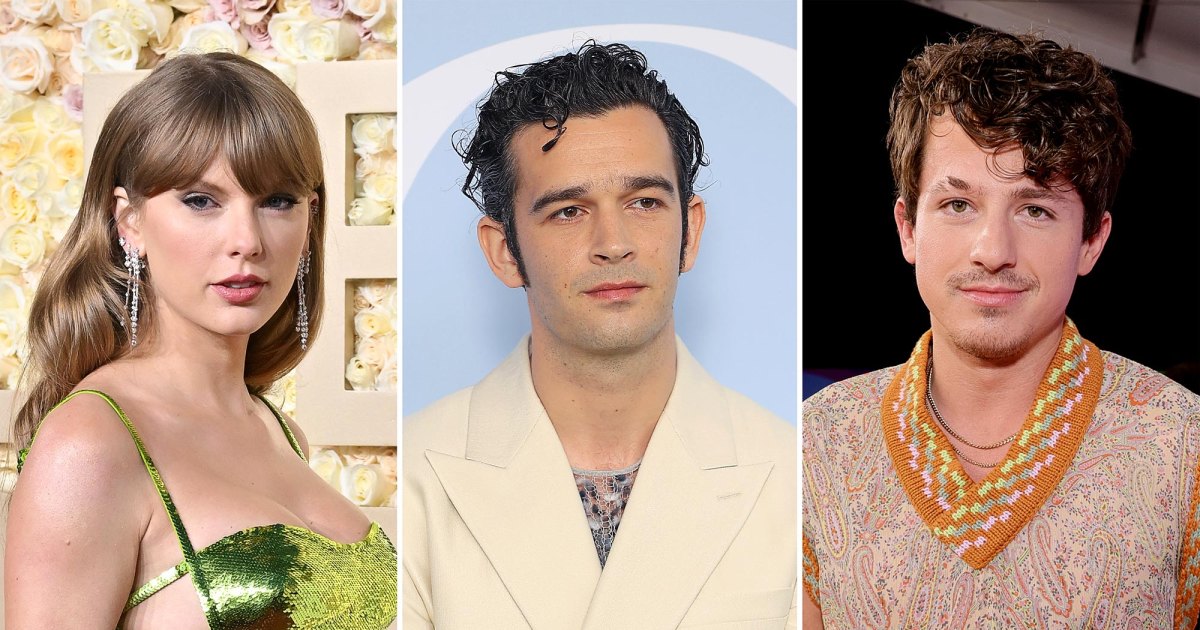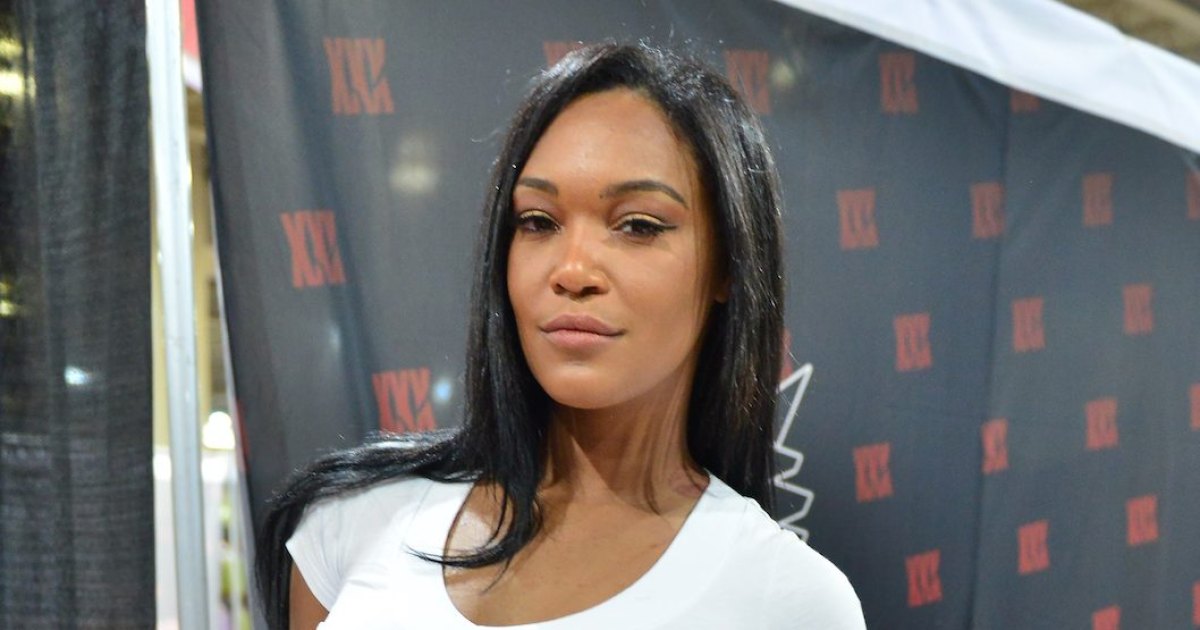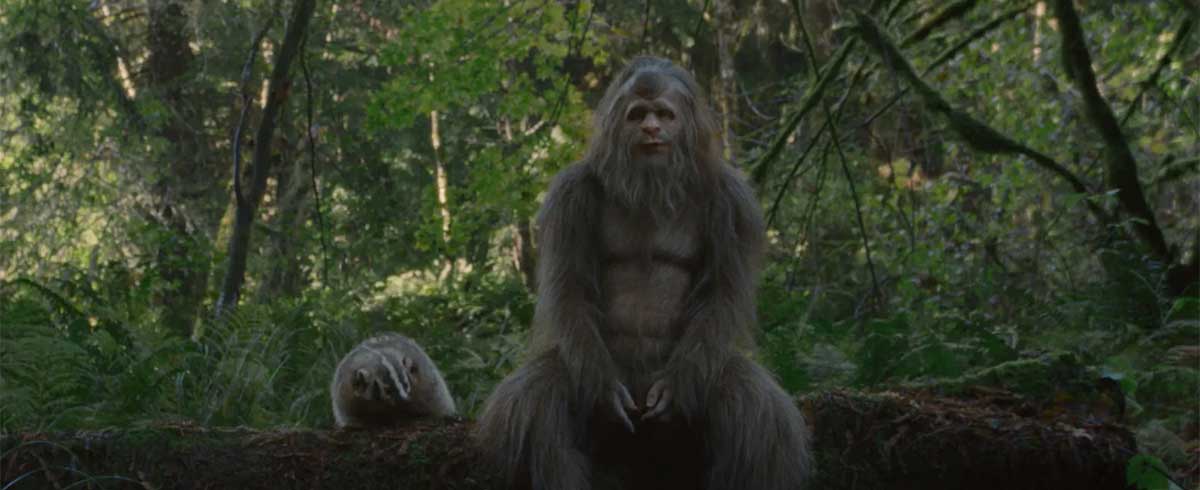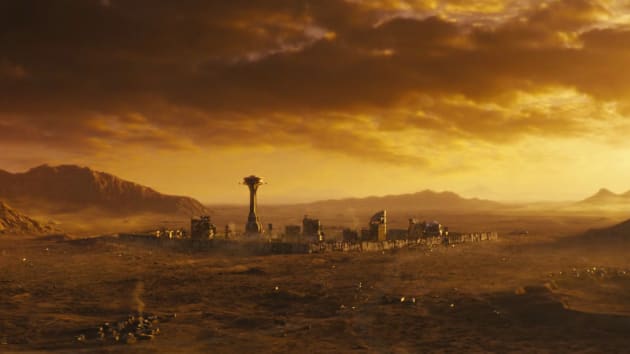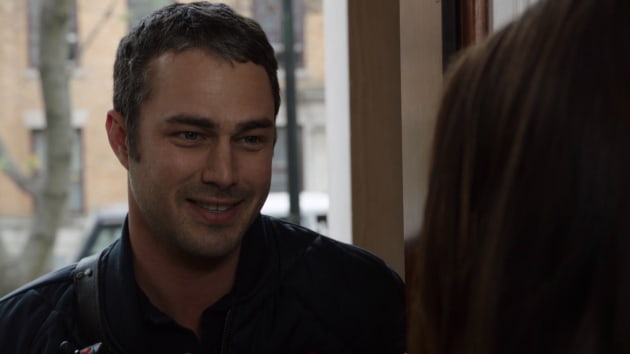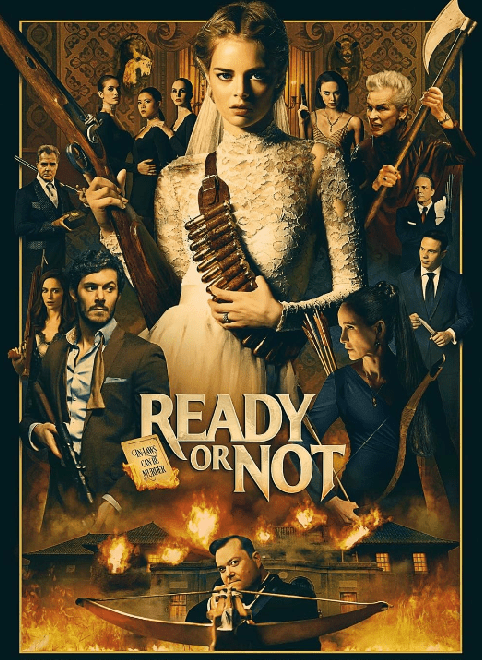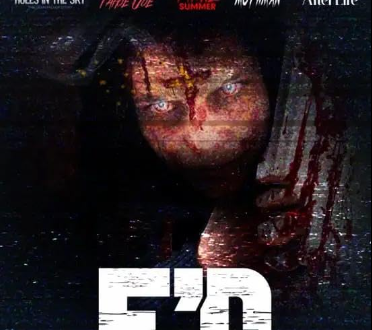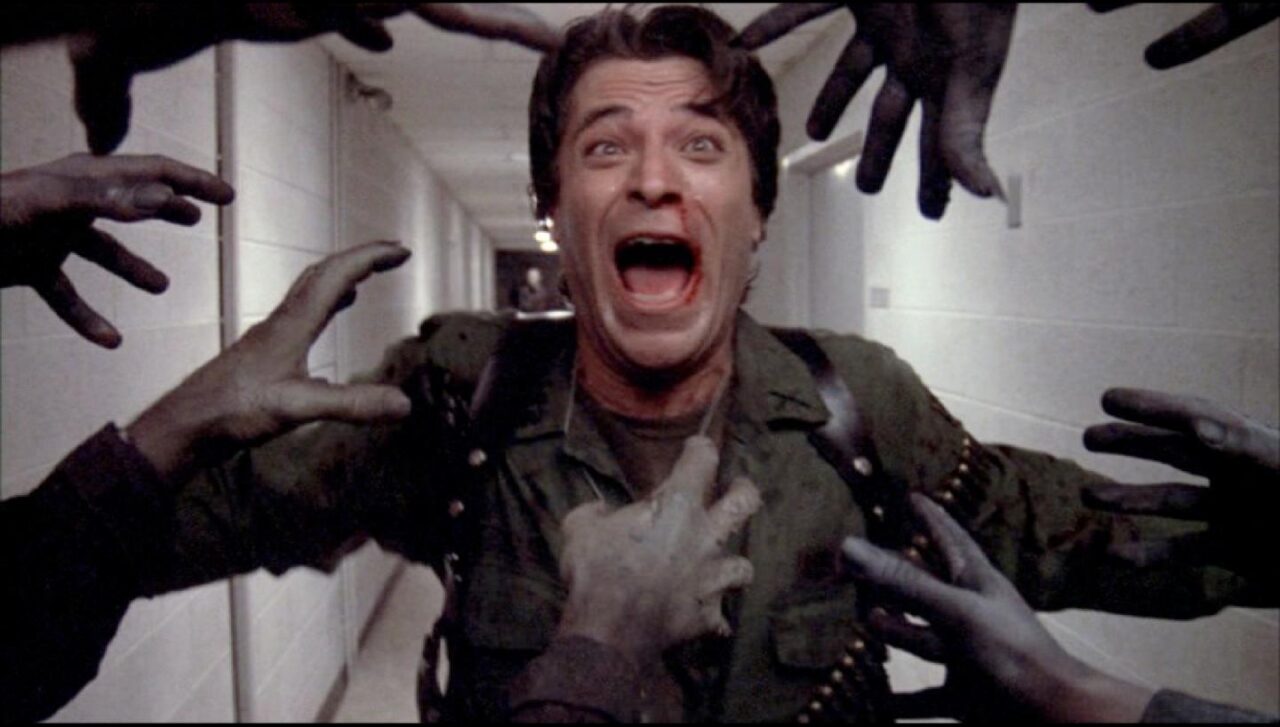

In ‘Day of the Dead,’ Harrison’s strangely optimistic score is the perfect fit.
![E5IrU6ZXEAkAv0B 788x443 - John Harrison’s Brazenly Hopeful ‘Day of the Dead’ Score [Terror on the Turntable]](https://www.dreadcentral.com/wp-content/uploads/2022/01/E5IrU6ZXEAkAv0B-788x443.jpeg)
![E5IrU6ZXEAkAv0B 788x443 - John Harrison’s Brazenly Hopeful ‘Day of the Dead’ Score [Terror on the Turntable]](https://www.dreadcentral.com/wp-content/uploads/2022/01/E5IrU6ZXEAkAv0B-788x443.jpeg)
Welcome to Terror on the Turntable! In this monthly column, join Rachel Reeves as she explores the powerful and unholy alliance that exists between horror films and their scores. Covering only scores that have been released on vinyl, it’s a conversation about the intersection of music theory, composer style, film history, and the art of deep listening. So, light the candles, put on your headphones, and get ready to drop that needle. The sacred ritual of listening to music on wax is about to begin. For this installment, Rachel dives into George A. Romero’s Day of the Dead and John Harrison’s hauntingly optimistic score.
As all horror fans know, inspiration and emotional catharsis can be found in the darkest of places. By safely exploring the most terrifying scenarios, the most egregious and complex nooks of humanity, horror allows audiences to project and process in a uniquely powerful way. While this deep-seated desire for an emotional release and creative catalyst can often be found through fictional narrative, it’s a supremely beautiful thing when the real-world stories unfolding behind the scenes hold equal strength as well. Such is the case for George A. Romero’s 1985 film Day of the Dead and his creative collaboration with Assistant Director (AD) and composer, John Harrison. Together, the two would craft a horror classic that continues to serve as an inspirational exhibition of dedication, filmmaking prowess, and a complexly pragmatic portrayal of humanity.
Related: Douglas Pipes’ ‘Krampus’ Score Rings All the Right Bells [Terror on the Turntable]
By the early 1980s, Romero was an indisputable Master of Horror. He changed the genre forever with 1968’s Night of the Living Dead. Romero continued to gain fans and push boundaries with films like The Crazies, Season of the Witch, Martin, Creepshow, and of course, Dawn of the Dead. Continuously exhibiting a masterful ability to balance social commentary with visceral horror and genuine heart, Romero’s distinctive approach to filmmaking extended far past scripts and celluloid. Well-known for his genial attitude, thick-rimmed black glasses, and tight-knit community of filmmaking friends, Romero easily rallied talented individuals to his cinematic cause. Such was the case for Pittsburgh native, John Harrison.
A multi-talented individual, Harrison’s interests have long resided in both the music and film worlds. After pursuing and obtaining a Theater Arts degree from Emerson College in Boston, Harrison took a small break to perform and tour with his band, Homebrew. Soon feeling the powerful allure of the theater once again, Harrison decided to take his education a step further by returning to Pittsburgh and snagging a Master’s in Film and Television from Carnegie Mellon University. Not wanting to hang up the guitar quite yet, Harrison simultaneously began to tour and perform bass with the infamously talented guitar player, Roy Buchanan. Then, in 1973, Harrison added one more spinning plate into the mix by founding a small film production company along with his friends Dusty Nelson and Pasquale “Pat” Buba.
Related: The Brilliantly Subversive Sounds of ROB’s ‘Gretel & Hansel’ Score [Terror on the Turntable]
Along with producing small, micro-budget personal projects like Effects, Harrison, Nelson, and Buba pursued various commercial and for-hire projects to pay the bills. After hearing about a locally produced documentary series called The Winners being green-lit with Romero and Richard Rubenstein at the helm, the team decided to reach out in an effort to secure a gig. Not only was Harrison surprised to actually get ahold of Romero himself with a cold call, surprise soon gave way to disbelief when Romero subsequently hired the team after their first meeting. Proving to be a winning opportunity indeed, the trio would soon become a versatile and important part of Romero’s regular cast and crew.
![E5IrU6ZXEAkAv0B 1024x582 - John Harrison’s Brazenly Hopeful ‘Day of the Dead’ Score [Terror on the Turntable]](https://www.dreadcentral.com/wp-content/uploads/2022/01/E5IrU6ZXEAkAv0B-1024x582.jpeg)
![E5IrU6ZXEAkAv0B 1024x582 - John Harrison’s Brazenly Hopeful ‘Day of the Dead’ Score [Terror on the Turntable]](https://www.dreadcentral.com/wp-content/uploads/2022/01/E5IrU6ZXEAkAv0B-1024x582.jpeg)
Following The Winners, Harrison wound up casually observing Romero’s work on Martin, he transformed into the Screwdriver Zombie for Dawn of the Dead and took a small role in Knightriders. Then, Harrison received a call that would soon elevate him to a whole new level. As the second part of a three-picture deal, Romero began working on the Stephen King penned anthology horror classic, Creepshow. Despite being a large production meant to rival Romero’s supremely successful Dawn of the Dead, Romero once again aimed to surround himself with friends and talent he could trust. In need of an Assistant Director on the project, Romero called on Harrison to accept the position. Despite never having worked on a production of this magnitude or in this capacity, Harrison was urged to step out of his comfort zone and into the fire.
Related: Terror on the Turntable: Step Into the Light of Jerry Goldsmith’s Classic Poltergeist Score
Perhaps bolstered by Romero’s genuine support and his communal approach to filmmaking, Harrison decided to kick his involvement with Creepshow up a notch by casually dropping hints at what a potential score could bring to the Creepshow table. Even though film scoring was still an unknown entity to Harrison at this time, Romero knew Harrison’s passion for film and his years of professional experience as a performing musician had massive crossover potential. And perhaps more importantly, Romero liked working with Harrison and had full faith in his ability to learn. By both successfully taking the plunge into unknown creative waters, the groundwork was laid for pure collaborative magic to unfold.
After parting ways for a spell, Harrison and Romero’s paths crossed once again when Romero found himself in need of a composer for his latest zombie adventure, Day of the Dead. While still in the script stage, Harrison immediately signed on and got to work on Romero’s ambitious third installment in his Night of the Living Dead series.
Related: Feeling The Groove of Death In ‘Final Destination’ [Spins and Needles]
While soon suffering severe budget cuts and corollary script changes due to Romero’s refusal to sacrifice his gore and integrity for an R rating, Harrison and Romero agreed to keep walking down the musical path that Harrison had already begun to pave. Despite creating musical sketches and themes for a film that would knowingly never get made, the foundation was strong. Interestingly, it was this conscious decision that would go on to add a very special and hugely impactful layer to Day of the Dead and its fractured cast of characters on the verge of communal disintegration.
“When the financing finally came through for a modified version of Day, [George] and Richard sent me tickets back to the ‘Burgh with the promise of months in a dank, dreary limestone cavern, working our asses off. Into the mine before sun up, out of the mine after sundown. No light of day for almost five months. It was one of the happiest times of my life.”
John Harrison (2013)
In the opening moments of the film, Harrison sets the mood with his evocative “Main Title” piece. A long, beautiful piece of electronic music, plenty of space is given to properly establish the world these new characters find themselves existing in. As swirling synths ebb and flow with restrained melodic tension, percussive rhythmic pulses reaffirm humanity’s presence in this clearly dystopic world. Eternally and effortlessly evolving, Harrison unexpectedly allows the tension to drop with an influx of achingly melancholic chord progressions and momentum fueled melodies. Rather than focusing on the terror and destruction littering the streets and hiding in dark, abandoned alleyways, Harrison uses this early opportunity to establish and focus on the lives left struggling to survive in this dark new world.
Related: From A Whisper To A ‘Scream’: Youth in Wes Craven and Kevin Williamson’s America
Immediately and boldly standing in stark contrast to Goblin’s wildly popular rock-infused Dawn of the Dead score, it is Harrison’s score that clues audiences into Romero’s intent and different approach for this latest cinematic excursion. Simultaneously working as Romero’s AD on the film, Harrison had intimate, lengthy discussions with Romero regarding music while scenes were literally being shot. Not only that, but once filming had wrapped, Harrison remained in Pittsburgh at Romero’s request to provide temp music while editing got underway. An atypical sequence of events for most film composers, this exhaustive and deeply personal involvement with Day of the Dead resulted in a score acutely tuned into Romero’s vision and the film’s complex emotional undercurrent.
![Day of the Dead Banner 1024x576 - John Harrison’s Brazenly Hopeful ‘Day of the Dead’ Score [Terror on the Turntable]](https://www.dreadcentral.com/wp-content/uploads/2020/07/Day-of-the-Dead-Banner-1024x576.jpg)
![Day of the Dead Banner 1024x576 - John Harrison’s Brazenly Hopeful ‘Day of the Dead’ Score [Terror on the Turntable]](https://www.dreadcentral.com/wp-content/uploads/2020/07/Day-of-the-Dead-Banner-1024x576.jpg)
Using minimal guitar and acoustic percussion elements throughout, most of Harrison’s score was performed on a variety of 1980s electronic technology including the iconic Prophet-5, Yamaha DX7, and a Kurzweil multi-effects processor. Coaxing a miraculous range of emotion out of these electronic pieces of technology, Harrison’s “Main Title” exudes a surprisingly (but importantly) hopeful vibe that continues to reappear throughout the film. Although often operating within minor keys and allowing his melodies a healthy dose of bittersweet sadness, it is the constant return to upward melodic movement and persistently forward momentum that consistently pulls the narrative focus back to the dysfunctional community of survivors and their deteriorating relationships.
Related: Diabolus in Haddonfield: The Legacy of Brutality in Rob Zombie’s ‘Halloween II’
More than simply being cost-effective, Harrison’s choice to create a largely electronic score cleverly mirrors the cold, isolated world the film’s small band of scientists and military personnel reside in. Hunkering down in an underground bunker somewhere in Florida, this stark, drab, literal hole in the ground offers few luxuries or affiliations with the outside world. Removed from whatever society is left, life for this stressed band of misfits has become a distorted version of the world as it was. By employing synths over traditional orchestral instruments, Harrison breathes a believable and subtle auditory breath of life into this environment. This is not a world where violins, flutes, and grand pianos exist any longer. Just as those beautifully evocative artistic elements have faded from this fictional world, so have they remained absent in the film’s score.
Another notably iconic aspect of Harrison’s score is the striking Caribbean-like tone and lilt that often appears throughout the film. As an example, check out the tracks “John Warns Sarah/People Got Different Ideas” or “On the Beach.” In the original draft of Romero’s script, much more of the film took place in the Caribbean and the Florida Keys. When composed around that world, the infusion of cultural elements functions and fits in a more traditional and expected way.
However, once the script revisions were made, those scenes no longer existed. By removing a large portion of visual justification for these aural elements, the way in which they function evolves. Freed from the bonds of location, these rhythmic patterns, synthetic steel drum sounds, and upbeat aura harken back to the world pre-zombie apocalypse. An understated but important textural element, the choice to move forward with these particular sounds ultimately gives the film an extra dose of melancholy and a potent pathway straight to the heart.
“His score is just as emotionally evocative as one of those oldies, just as mysteriously dark when it needs to be, just as bombastic when a startle is wanted…yet there’s an overtone of hope, an odd sort of happiness…a calypso voice that advises us ‘Don’t worry, be happy’ even in the face of impending doom.”
George A. Romero (2013)
Despite Harrison really shining in moments of authentic and heartfelt emotion, his score for Day of the Dead delivers some truly eerie and wonderfully unsettling moments as well. In the track “Fight to Survive,” dissonant, reverberating chords settle around unpredictable percussive beats. An abrasive and off-putting moment of music, the dramatic and stunning practical gore effects created by the one and only Tom Savini are supported and presented with genuine gusto. Similarly, in the segment “Logan’s Lab/Logan’s Madness/Beef Treats,” Harrison creates an unnerving sequence of sounds that settle around the scene like a dangerous gas of unknown origin. Expertly dissolving from frenetic repeated melodies to hauntingly atmospheric, the transition from one approach to the next works on a chillingly transportive level.
Related: Sidney Prescott & Gale Weathers: Sister Survivors and Horror Matriarchs
A brazenly bold approach at every level, Romero’s Day of the Dead continues to stand as a powerful reminder of what can happen when creativity, vision, and community are truly valued over studio expectations and bottomless pocketbooks. Not surprisingly, both the film and Harrison’s score received markedly mixed reviews upon its release. While some immediately fell in love with Harrison’s powerfully emotional melodic approach, others found the style inappropriate for a zombie film crafted by one of the true genre greats.
As time has marched on, it seems as if Harrison’s score has become reappraised and appreciated for the artful synth beacon of hope that it is. Like the island refuge that our Day of the Dead heroes finally find themselves on, Harrison’s music functions within the film as that intangible, sensory reminder that even in the darkest of times, in the direst of circumstances, there is still hope out there worth striving for.
Crate Digging
Luckily for fans of Harrison’s Day of the Dead score, there are a whole host of beautiful releases out there ripe for the picking. Originally released on vinyl back in 1985 by Saturn Records in the US and Polydor in Japan, copies are still relatively easy to come by at reasonable prices. While later followed by some truly lovely CD releases (including a killer 2-CD expanded edition from La-La Land Records), it wouldn’t be until 2013 that Harrison’s music once again got pressed on vinyl. After discovering the original 1985 master tapes in a recording studio attic, Waxwork Records and Harrison himself oversaw the mixing and mastering of this extensive collection of music restored specifically for vinyl. Available in a variety of color variants (and recently repressed due to consumer demand), there is most certainly a version fit for any film music fan’s collection.
Tags: Day of the Dead George A Romero Terror On The Turntable
Categorized: Editorials News Terror On The Turntable


